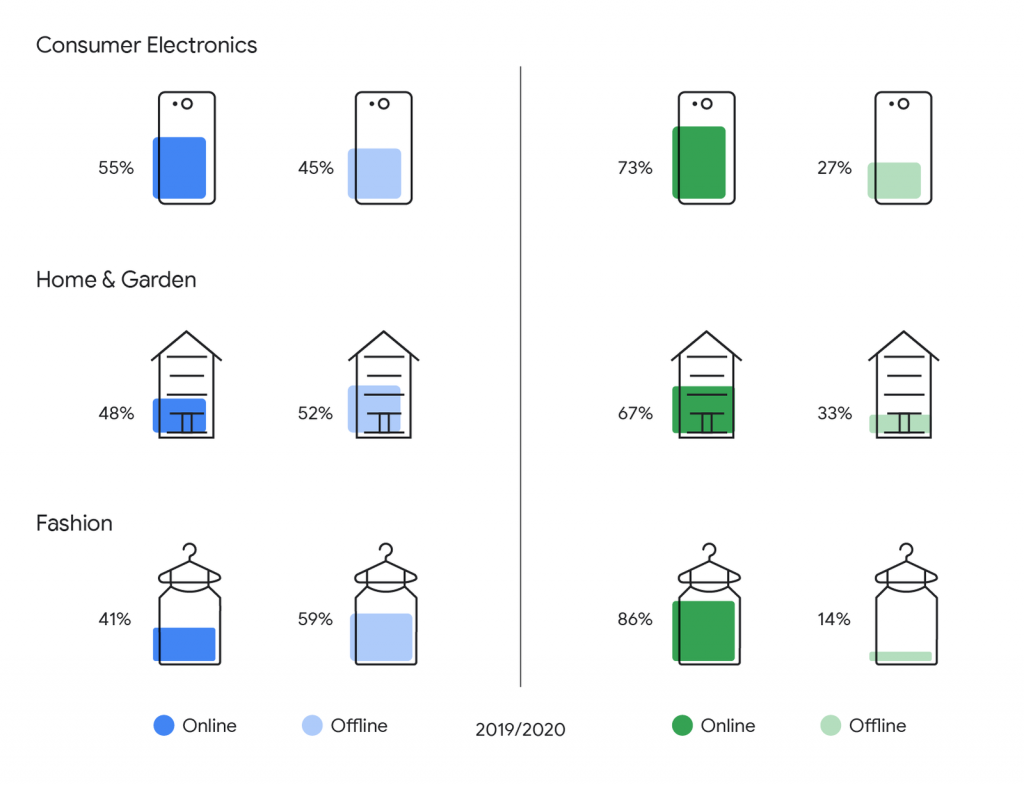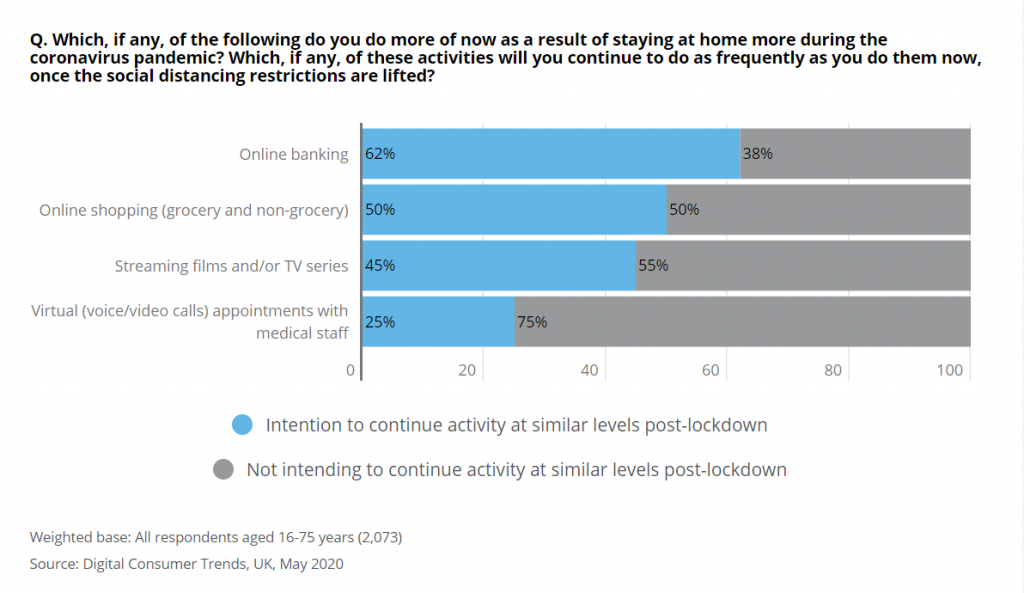The pandemic this year has seen consumers experiencing conditions never seen before. Restrictions on our movements, shopping, social behaviour and for extended periods of time. It’s obvious that we’ve all had to adapt; working from home, connecting and socialising with others online and changing the channels and frequency we shop to name but a few. Food and drink has been largely impacted, with people working from home more. Limited travel for work meetings. Closure or limited dining out in restaurants and drinking in pubs. With hospitality venues being closed, consumers have been eating and drinking more at home than ever before, again influencing shopping habits.
Now that a vaccine is being administered, the outlook for 2021 looking more promising. How much of our changed behaviour, initiated during lockdown will remain in the future?
Consumer Behaviour
Predicting which customer behaviours are transient, and which will continue, is now a key question for brands and retailers. Analysing current customer activity, watching how consumers search online trends and buying patterns will indicate how our behaviour is evolving. Engaging with customers to understand if there are any new habits they intend to continue. Identifying which (if any) changes are viewed as positive will be crucial moving forwards. Understanding how customer behaviour is likely to change in 2021 will shape how we cater for our customers moving forwards.
Consumer trends during lockdown
Research has been conducted since March to gauge and measure consumer buying behaviour.
Deloitte ran a digital consumer trends survey during this time, which has revealed:
- 40 per cent of respondents did more online shopping during lockdown.
- 14 per cent had more remote (phone or video) appointments with health practitioners.
- A third streamed more films and/or TV series on SVOD platforms during lockdown.
These new online trends that were initiated during lockdown may become the new ‘normal’ consumer behaviour of the future.
Differences by Category
Whilst retail was greatly affected during these lockdown closures, there has been a stark contrast in sales performance within different categories. According to Savills Research ‘The sectors that were affected the most were Clothing and Footwear, while smaller drops or even gains were noted in Sports, Electronics, DIY, Furniture and Homeware, as people had the opportunity to spend more time on hobbies and home improvements during the lockdown.
- Fashion spend was down about -30% YoY in the UK (July).
- Food and grocery sales were up annually across all markets, 11% in the UK. This is largely attributed to lockdown resulting in all meals being taken in the home, rather than a high proportion being spent in restaurants, cafés, and takeaways.
Online Shopping
It is no surprise that with many shops forced to temporarily close, there has been a seismic shift to online shopping. Shops that already sold online were the quick winners when consumers shifted from physical stores to online delivery. Over the last 9 months, many shops that could, have switched to providing an ecommerce platform, and in more recent months, many stores that didn’t offer online delivery have diversified to offering collection slots at store.
A quarter (27%) of British adults ordered more deliveries than usual, or for the first time, during lockdown. CGA Brand Track Survey.
Smart Shopper, a study commissioned by Google and conducted by KANTAR in May 2020, shines a light on shopping behaviours during the pandemic which can help inform brand, marketing, and consumer strategies. 86% of fashion purchases were conducted online in the period under review, with high rates also recorded for the home/garden category (67%) and consumer electronics (73%).
The following chart shows the uplift to online: Online V Offline Purchases Year on Year 2019/2020

Online Search/Fact Finding
Online research also increased in 2020, with 84% of shoppers using online sources to support their purchases, compared with 76% in 2019. According to Google, 80% of consumers aged 45 to 54 conducted online research, compared with 68% in 2019, while a similar proportion (81%) aged 55+ also went online to research items. Sourced from Think With Google, Kantar
Lockdown Behaviour
Many new consumer behaviour habits like ‘shopping online more frequently’ are habits consumers are planning on continuing well after lockdown ends. Global Web Index report that:
- 33% of those who weren’t purchasing online regularly prior to the outbreak plan to spend more time shopping online after the outbreak including over the Q4 period.
- 40% of respondents in our 17-market study say they’ll buy more things online for home delivery after the pandemic, with global figures consistent by gender income and age.

Backing this up, A recent study by PFS, found that three in five (60%) consumers have purchased more goods since the lockdown began, than they did before, with 53% having shopped more online. More than three quarters (77%) of these went on to say that they expect they will continue to purchase online more once the lockdown is over – indicating a potentially irreversible change in consumer purchasing behaviour.
To conclude
The impact of coronavirus has certainly had long lasting effects on consumer shopping behaviour. How ingrained this behaviour is – only time will tell!

